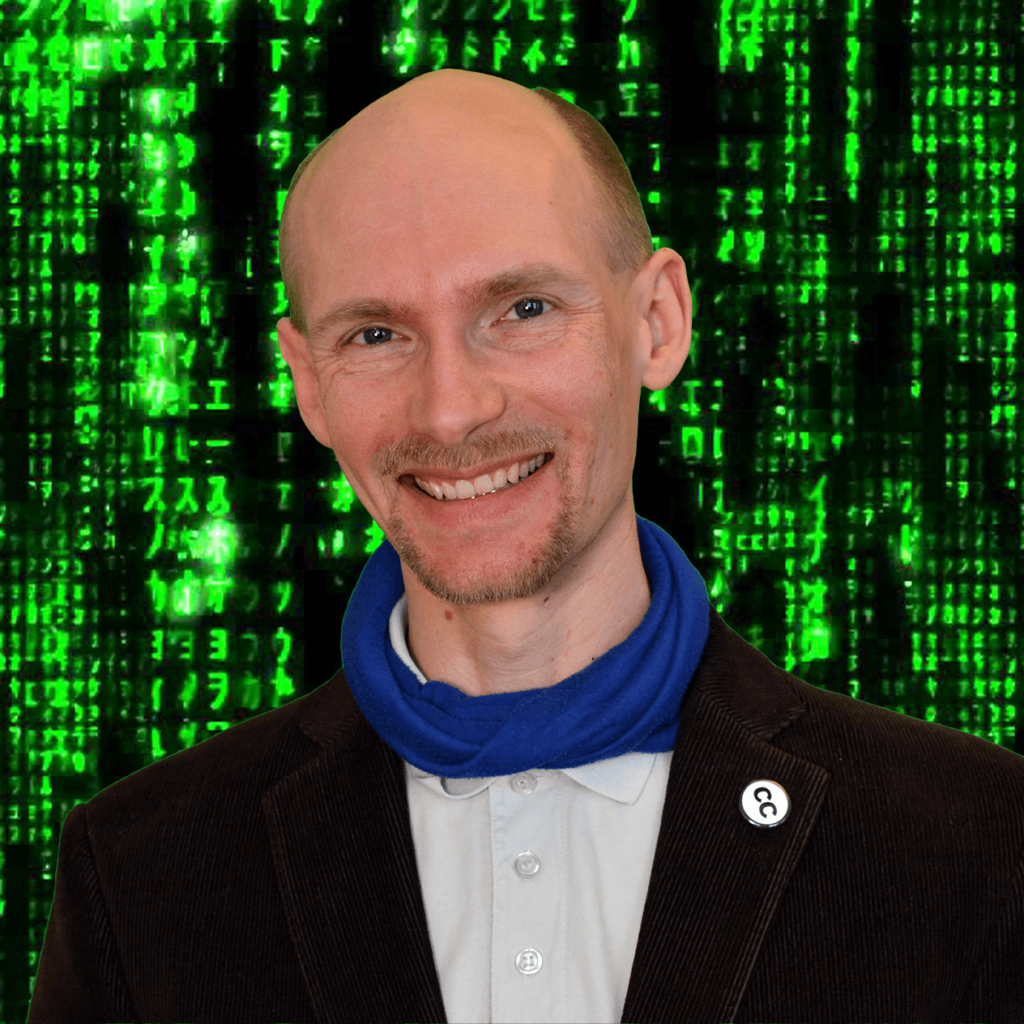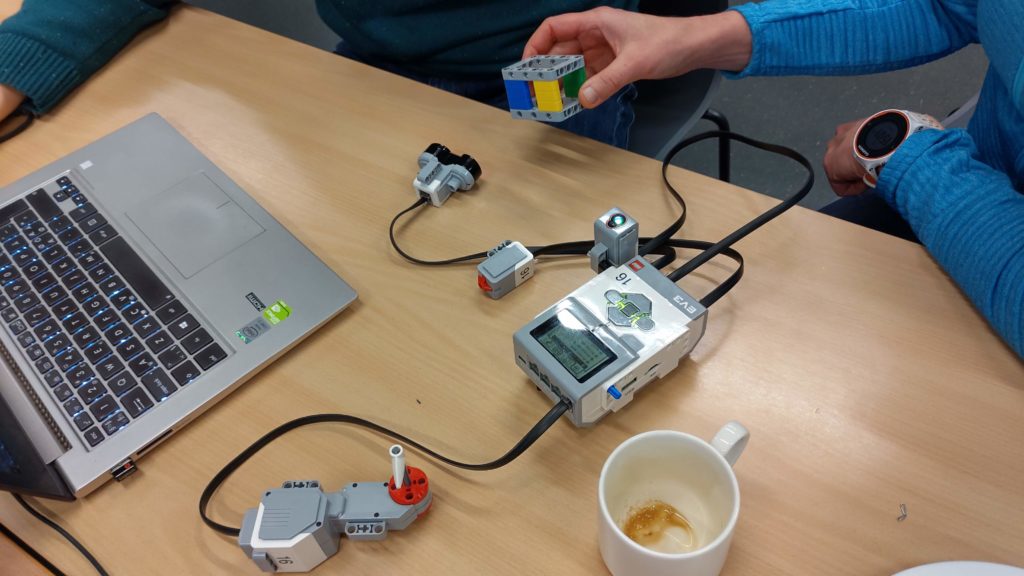
Tarmo Toikkanen is a design researcher of learning as well as a seasoned teacher trainer in Finland, Europe and Asia.
Why have you joined Code School Finland?
The national curriculum in Finland in 2014 presented a unique way of addressing programming in primary education: a mandatory element of all teaching as part of transversal competences. As a researcher, I did a bit of analysis in 2015 and found that Europe had nothing like it. And still doesn’t. Nor does the rest of the world.
I was involved in the initial rollout, both supporting the new proposed curriculum and training over 2000 Finnish teachers in the Code ABC MOOC.
After the initial buzz, things have been a bit slow. And studies on learning achievements have shown that programming is quite rarely taught in Finnish schools, and results are slim. So while some teachers were eager to get going, the majority are lagging behind.
The teacher training and materials offered by Code School Finland are a turn-key solution for teachers. All the materials are tied to curriculum requirements and can be adapted to various subject areas and projects. They also allow for differentiation up and down, and are pedagogically sound. And even though the materials use or recommend certain equipment or coding tools, schools can choose to use something else. CSF does not sell one single technology or tool, but rather high quality teacher materials for teaching and learning computational thinking. They allow even novice teachers to safely get started.
Even though open content is close to my heart, I recognize that voluntary efforts usually die down when it’s time to polish and package the results. Project funding is not a sustainable way to keep something going. Therefore commercially produced materials have a role to play in providing high quality products that are maintained and improved perpetually.
Why do you think programming is needed in primary education?
When Finland was an agricultural society, our schools had a week’s leave for harvesting potato crops. Children were taught the skills needed in that society. Likewise, now every child should understand the principles of this technological society, and how one can be a productive adult that is in control, and is not just a passive consumer. Learning to sow a field was just as useful back in the day as it is now to be able to command computers.
Of course not everyone became a farmer, and not everyone will become a coder – any more than everyone would become an author, a musician, a mathematician, a historian, or an athlete. But everyone should get the fundamentals of all these areas of life, so they then can develop their expertise according to their own interests.
What in the Finnish approach is particularly good?
The point of it all is not learning to write code. What is important is to understand how computer technology works. How the internet works, how computers calculate, what algorithms dictate what we see in various services, who wrote those algorithms, and why? Media criticism, multiple literacies, societal competences.
The genius in the Finnish core curriculum is that programming is not shoved on the shoulders of the tech teacher, but is in the hands of the classroom teacher in lower primary (grades 1-6). That means there’s no point in teaching programming separately. Coding can be used as a study tool, just like the skill of writing is utilized in subjects other than mother tongue.
When programming is a study tool, creativity can blossom. Programming of course improves one’s logical thinking and problem solving skills, but those are (in my mind) a very uninteresting side benefit. The main value is in allowing pupils to make their own choices and create something visible that they can share with family and friends. These visible outcomes also provide the teacher an excellent way to see what the pupils understand and where they need help.
Referring to my own school years, I wonder when was I given a chance to be creative and create something. I can only thing of art studies, writing essays, and the occasional project work. In other subject we studied, but we did not produce. I never composed music, I never wrote stories of historical characters.
The current programming tools are so easy to use that each and every child, also ones with learning disabilities, can be creative and give voice to their own thoughts and feelings. The motivational boost that this brings is tremendous.
What should Finnish schools still develop or improve?
The challenge in our curriculum is that these noble aspirations are written in the preamble and as part of the transversal competences. The Finnish National Agency for Education failed when writing the subject area specific parts, and coding is only apparent in mathematics and crafts, even though it was supposed to be included in all subjects. The effect of this is that in upper primary (grades 7-9) most teachers just let the math teacher handle coding.
The next iteration of the core curriculum will surely correct this mistake, so good school in Finland are already supporting all teachers to get coding into their toolkit. And that’s where the materials and training provided by Code School Finland can be very useful.
Why should the Finnish model be exported to other countries?
Virtually all nations have added technology and coding into their primary education curricula. In many nations it’s only introduced in upper primary, and in most it’s a separate subject area, or included in technology studies.
Most countries have adopted the “traditional math” approach to coding, which means that pupils are subjected to dry exercises and theory that prepare them for computer science studies. The global need for coders is influencing even primary education, but I feel that is a large mistake. Killing any childish curiosity and motivation by presenting coding as an engineering practice is an assured method to not have creative genius coders in the future.
The Finnish schools in general cherish the natural curiosity of children, their imagination, and internal motivation. Learning through play is a hallmark of Finnish schools. And while that may not sound like effective use of time, it still produces some of the best results in the world. And considering the short school days (and no homework), Finnish schools are by far the most efficient in the world.
Ask any top level software developer and you will hear that coding is not an exact rote task but one that requires creativity, thinking outside the box, and being able to bend the rules. The way to learn that is to allow learners to create what they want, in the way they themselves come up with. Doing exact detailed algorithmic exercises is fine every now and then, but if the entirety of coding studies is that, the most important qualities of a top performing software professional are left out.
So yes, I believe the Finnish approach with creativity, experiencing, loosely defined project work and team work are the way to introduce coding to a new generation. Some will become coders, and a few will become exceptional software professionals. And everyone will have a visceral feel for how computers operate and when they might be useful aides in later working life.
Tell us about an experience with coding and children or teachers.
I could already see with my own children that at age 5 without being able to read they were able to clear the coding requirements the Finnish curriculum places at the end of grade 6 (approximately: “be able to create a simple program using a visual programming environment”). So the requirements are not that high. This has given me hope that each and every teacher can incorporate coding into their teaching, if they just want to. The tools are extremely simple to use.

Another experience comes from a teacher training event in the fall of 2019, where I was training teachers of a large municipality on the use of CSF materials. Participants included both novices and experience it tutor teachers. When both groups said that the materials they were given were an order of magnitude better than anything they had ever seen, it really added to my confidence that CSF has something valuable and that Jussi has really done amazing work on our pedagogical approach.
What is your next challenge with CSF?
My whole life I’ve always had several parallel projects and that keeps me going. I look forward to a very varied set of tasks ranging from material development, teacher training, internal process development, but also customer negotiations in the Nordics, Europe, and Asia. But the most important thing is of course that CSF is doing something worthwhile and has the right approach to doing it.
Leave a Reply